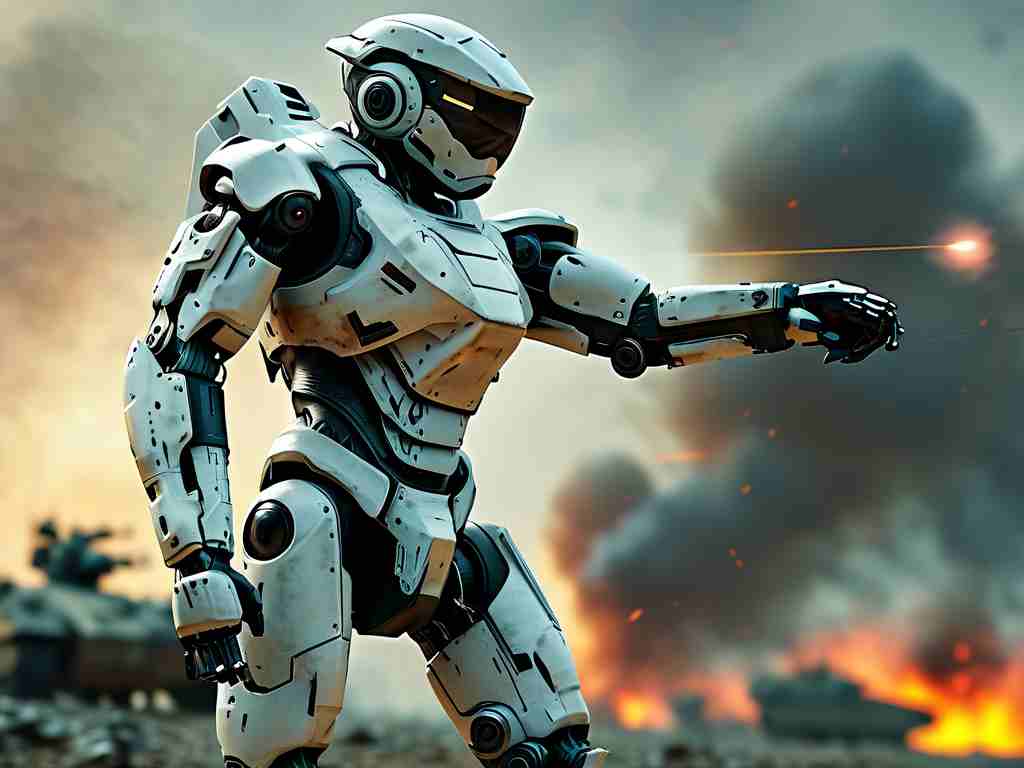The field of robot combat technology has rapidly evolved in recent years, transforming modern warfare with innovations that blend artificial intelligence, advanced sensors, and autonomous systems. This shift isn't just about replacing human soldiers; it's about creating smarter, safer, and more efficient combat scenarios. As nations invest heavily in these tools, the implications stretch beyond battlefields to ethical debates and global security dynamics. Understanding this progression helps grasp where we're headed in an era where machines increasingly take center stage in conflicts.

Historically, robot combat began with simple remote-controlled devices during World War II, like early bomb-disposal units. However, the real leap came in the late 20th century with the advent of drones, such as the Predator series used by the United States for surveillance and strikes. These initial models relied on human operators, but today's systems incorporate AI that enables them to learn from environments and make split-second decisions. For instance, autonomous ground robots can now navigate urban terrains using lidar sensors, identifying threats without constant oversight. This autonomy reduces human exposure to danger—imagine a scenario where robots handle reconnaissance in hostile zones, minimizing casualties. Yet, it's not all seamless; early trials revealed glitches, like misidentifying civilians as targets, which underscores the need for rigorous testing. As one defense expert noted, "The rush to deploy must balance with fail-safes to prevent unintended escalations."
Key technologies driving this revolution include machine learning algorithms that process vast data from cameras and radars, allowing robots to adapt to unpredictable combat situations. Take swarm robotics, where multiple drones coordinate attacks or defenses autonomously—this was demonstrated in recent exercises by forces like China's People's Liberation Army, showcasing how fleets can overwhelm defenses with precision. Additionally, advancements in materials science have led to lighter, more durable robots that withstand harsh conditions, from desert heat to arctic cold. Energy efficiency is another frontier; newer models use hybrid power sources to extend missions for days. Despite these gains, challenges persist, such as cybersecurity vulnerabilities. Hackers could potentially hijack systems, turning them against their operators—a risk highlighted in simulated wargames where adversaries exploited software loopholes. Addressing this requires constant updates and ethical frameworks, as international bodies debate regulations on autonomous weapons.
Beyond military applications, robot combat tech spills into civilian sectors, enhancing disaster response and border security. For example, robots deployed in earthquake zones can locate survivors faster than human teams, while AI-driven patrols monitor high-risk areas to prevent smuggling. This dual-use nature fuels innovation but also sparks concerns about proliferation. Countries with less oversight might misuse these tools for suppression, raising human rights issues. Ethically, the biggest debate centers on "killer robots"—systems that decide to engage targets without human input. Critics argue this erodes accountability, as seen in incidents where algorithmic errors caused collateral damage. Proponents counter that, with proper safeguards, robots save lives by executing high-risk tasks flawlessly. Looking ahead, trends point to even greater integration, like neural-network-enhanced robots that predict enemy moves based on behavioral patterns. Collaborative efforts, such as NATO's joint research initiatives, aim to standardize protocols to avoid arms races.
In , robot combat technology represents a double-edged sword, offering unprecedented capabilities while demanding careful stewardship. As we advance, fostering global cooperation and ethical guidelines will be crucial to harness its benefits responsibly. The future battlefield may be dominated by machines, but human wisdom must guide their evolution to ensure they serve as protectors, not threats.

